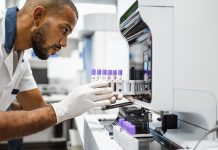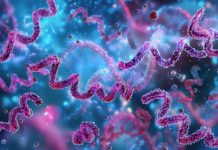UC Berkeley scientists unveil a powerful new at-home test using nanotech and AI to detect diseases like COVID-19 and cancer with unprecedented sensitivity
As demand grows for rapid, reliable point-of-care diagnostics, researchers at UC Berkeley have introduced a novel biosensing platform that could significantly enhance the sensitivity and accessibility of at-home testing. The at-home test is capable of detecting a variety of disease biomarkers with high sensitivity, making it suitable for identifying multiple health conditions, such as COVID-19, Sepsis, and Prostate Cancer.
Designed with scalability and clinical relevance in mind, the approach leverages fundamental physical principles and advanced nanotechnology to address longstanding limitations in current at-home tools.
“This simple yet effective technique can offer highly accurate results in a fraction of the time compared to traditional diagnostic methods,” said Kamyar Behrouzi, who recently completed a Ph.D. in micro-electromechanical systems and nanoengineering at UC Berkeley. “Our work paves the way for more affordable, accessible diagnostics, especially in low-resource settings.”
The coffee-ring effect
The researchers used a natural process called the ‘coffee-ring effect’ in their research. When a droplet of liquid dries, it creates a flow that pushes particles towards the edge of the droplet. If the particles are coloured, as in coffee and wine, the resulting stain will be darker around the edges than in the middle.
The researchers developed a biosensor for detecting COVID-19 when they realised that droplets of the experimental solutions were leaving ring-shaped stains as they dried. Behrouzi, one of the leading researchers, found that this coffee-ring effect could be used to easily concentrate particles of the COVID-19 virus, potentially making them easier to detect.
“We figured out that we could use this coffee-ring effect to build something even better than what we initially set out to create,” Behrouzi said.
The rapid test is 100 times more sensitive
The rapid at-home test technology utilises tiny particles known as plasmonic nanoparticles, which possess a unique ability to interact with light in a special manner. To perform the test, the user applies droplets of liquid containing disease proteins, obtained from sources such as cheek or nasal swabs, onto a membrane.
As the droplet dries, it concentrates any disease biomarkers at the edges, forming a “coffee ring” effect. The user then adds a second droplet containing plasmonic nanoparticles that have been designed to attach to the disease biomarkers. If these biomarkers are present, the nanoparticles will aggregate in specific patterns, altering how light interacts with the membrane. This change can be observed visually or detected using an AI-powered smartphone app.
The at-home test provides results in a rapid time under 12 minutes, offering 100 times more sensitive detection of COVID-19 than equivalent tests.
“One of the key proteins that we can detect with this method is a biomarker of sepsis, a life-threatening inflammatory response to a bacterial infection that can develop rapidly in people over 50,” said study senior author Liwei Lin, a Distinguished Professor of Mechanical Engineering at UC Berkeley. “Every hour is critical, but culturing bacteria to determine the source of the infection can take a few days. Our technique could help doctors detect sepsis in 10 to 15 minutes.”
The researchers have developed a prototype for the at-home testing kit, similar to at-home COVID testing kits, which incorporates 3D-printed components to assist in the placement of the sample and plasmonic droplets.
“During the COVID-19 pandemic, we relied on at-home tests to know if we were infected or not,” Lin said. “I hope that our technology makes it easier and more accessible for people to regularly screen for conditions like prostate cancer without leaving the home.”











